Dissolved in Dew
uncoiled rivers & sleeping stars
I swim in nurturing liquid, a child
in the womb of matter. The holy well
uncoils its rivers in me, its threads of light.
A taste of stone in the water, of rock,
the bones of earth. Closing my eyes, I see it,
taste, feel it; and I’m young again
and in Nola, filling stone jars with my mother
who said Don’t spill a drop, it’s rare
and precious; there are stars asleep in it;
it holds their powerful rays. Dissolved
in dew, their distant fires, shaping my days.
Hilary Llewellyn-Williams, from ‘XVII Cosmology’, The Book of Shadows
Rising sap in the bluebell woods, 19 April 2024.
Hello, and a warm welcome to this Full Pink Moon edition of Bracken & Wrack.
April’s full moon falls in mysterious, transformative Scorpio. Rather than actually being pink (which would be lovely), this moon is said to have been named by native American tribes for the pink wildflowers - phlox subulata, known as creeping phlox or moss pink - that used to bloom along the eastern side of North America at this time of year.
This full moon is all about shedding, that’s what I keep reading over and over. Trying to find out more about its significance according to the stars, I found some online astrology (published 23/4/24) by Emma Howarth, author of The Astrology Almanac 2024, who says:
‘A full moon in Scorpio brings leap-before-you-look energy into our lives, inviting all of us to shed our inhibitions, find our focus and allow more passion in. So, if you’re ready to tear it all up and start over or tell someone how you really feel, now might just be the perfect time to throw caution to the wind. The full moon in Scorpio provides a perfect opportunity to shed an old skin and step into a new one. Whatever you want to do and whoever you want to be, the invitation is ready and waiting - Emma Howarth
Well this is certainly an exciting prospect, if you are currently feeling a bit stuck (and if you have faith in astrology). Here in Norfolk we have had very changeable and chilly weather lately, so the idea of bursting out of our chrysalis to find a new world of sensuous nourishment is very enticing. You could even say that this feeling of intensity and potential is echoed in the sharp vibrancy of the life palpably stirring and rising as soft hazy April gives way to passionate May.
Sappy bracken bursting through last year’s stems on the heath, 29 April 2023.
In this edition of Bracken & Wrack:
A Day for April Brides
The Fairy Flute
A 1930s Fenland Childhood: May Day
The Crow and The Cup
While we’re still talking about the Pink Moon, how could I resist slipping in a beautiful song of the same name by Nick Drake? I hope you’ll enjoy it in a bluebell wood with a cuppa in the spring sunshine. Even if that’s not your reality in the mundane world, music has a wonderful way of transporting you wherever you most want to be.
A DAY FOR APRIL BRIDES
I have written elsewhere about the practice of keeping a simple daily nature journal, or what I call ‘nature pages’. This term, I have to admit, has been shamelessly borrowed from Julia Cameron, who developed the concept of ‘morning pages’. The idea is that as early as possible each day you write three longhand pages (or for 20 minutes) in stream of consciousness style without taking your hand off the page, editing or reading back what you have written. Used like this, the practice helps to unlock your hidden thoughts and desires and even gives solutions to problems without your head getting in the way.
The beauty of this approach - at least for me - is that it’s not the least bit intimidating. There is no need to make it neat or artistic or perfect in any way; you just write. I always have a few cheap A5 notebooks on the go and the rule I initially set myself was that on coming back from a walk, usually just over the heath and back, I would sit and write two sides in longhand without any judgement or over-thinking.
Now I would love to be able to tell you it’s been an unbroken practice for months and months; years maybe. But the reality is that having started the first notebook 18 months ago at Michaelmas as part of a 100 days challenge and having kept up the daily journal entries until mid November, there began to be wintry days when I didn’t go out for walks and that is when the practice slid away.
As I said then:
‘All went really well until the dark mornings and change in the weather meant that it was all too easy to talk myself out of the pre-8am walk. Sometimes I did still go out later in the day and then write about the walk, but other times I just didn’t get out because it was raining or icy. As with anything like this, once you’ve ‘failed’ the spell is broken and you’re left floundering. The last entry in my notebook for the 100 days project was written on 18 November 2022.
In the new year, something changed. Epiphany had come and gone. It was still winter, of course, but a new realisation struck me. On 29 January 2023 I wrote: ‘A new year and a new resolve to begin nature journalling again. If there are days when I don’t get out at all, well, they are few and far between. If they happen, the day gets left out and I begin again the next day. That’s fine.’’
So really I hadn’t failed, although my sense of perfectionism told me I had. A new day is always around the corner, or at least if we’re lucky it is, and that luck is something to be celebrated.
Unexpected company at the alder carr, 24 April 2024.
All of these thoughts came to mind today as I searched in a drawer for a different notebook and pulled out the nature pages book from last spring and summer. Flipping over the pages I found my entry for exactly a year ago: 24 April 2023. What you see here is the number of words that fit onto two lined pages, well obviously depending on the size of your writing :-)
‘As I pull on my fleece for the early morning walk, the fine drops of rain on the paving slabs are a complete surprise. I look up and the sky is quite bright, certainly not loaded with leaden clouds. Still the droplets are light, little more than mizzle, so I get my boots from the van and head out. The sweet scent is even more noticeable after rain. Loosened blackthorn blossom confetties the tarmac: truly a day for April brides. The ploughed field is bright, played over by sunbeams despite the increasing tempo of the raindrops. It’s not quite enough to turn me back, so instead I delight in the scents and the sheer exuberance of the plants now pushing through everywhere. Where the alexanders legion had every bank flanked and covered, proud and invincible, now it seems to have withdrawn slightly, its colours a little subdued as other bands come to the fore. So much red dead nettle this year. That’s the pink you can see as the red campion hasn’t yet arrived. I wonder whether it will have a quiet year? Meanwhile cow parsley unfurls just in time for the May-ing, and cleavers is everywhere, thrusting up stiff with sap before reaching its peak and twisting and snaking over everything that comes around it. A patch of flowering Jack by the hedge. A big patch. How did that spring up so suddenly with its perfect scalloped leaves and clusters of white flowers that I would love to see glistening under a full moon. They will glisten anyway, as the fox pads past. Does it seem a sudden thing, to see green hedges? I’ve been aware of the reawakening but still it comes as a jolt to realise that all the twigs are clothed. Now I can’t follow the path of the wren as it darts inside.’ - nature pages, 24 April 2023.
Having come upon this raw piece of writing again, it’s such a simple thing but feels so worthwhile. For a start, I can see how words written like this could later be shaped into a poem. More importantly they capture a moment in time, and provide a record of exactly what was happening in nature on any given date as well as your personal response to that. And you really do find yourself experiencing even a tiny walk far more deeply, especially if you make a point of engaging all your senses as you go along. I would definitely encourage you to try something similar - adapted to your own circumstances - if it appeals to you.
So easy to overlook the scraps of beauty under our feet.
Puck: Over hill, over dale,
Thorough bush, thorough brier,
Over park, over pale,
Thorough flood, thorough fire,
I do wander every where,
Swifter than the moonès sphere;
And I serve the fairy queen,
To dew her orbs upon the green.
The cowslips tall her pensioners be:
In their gold coats spots you see;
Those be rubies, fairy favours,
In those freckles live their savours;
I must go seek some dewdrops here
And hang a pearl in every cowslip’s ear.
Farewell, thou lob of spirits: I'll be gone;
Our queen and all her elves come here anon.
William Shakespeare, ‘Over Hill, Over Dale’, A Midsummer Night's Dream, Act II Scene I
THE FAIRY FLUTE
Down in the alder carr, there is certainly a feeling that the fairy queen and all her elves will be here anon. I think I’d better have a bit of a practice on the strange little fairy-flute I found languishing in a dusty corner of my mum’s garage, so that I’m ready to play it in the carr on May’s Eve. Last year at this time I did exactly that, and rather than playing a tune of my deciding I just let the fair folk send whichever notes they chose to. It all felt rather magical, so that’s what I shall do again. Who knows how my call will be answered?
Piping in the May on the mysterious fairy flute. No-one quite knows where it came from.
A 1930s FENLAND CHILDHOOD
In the last Bracken & Wrack, The Emerald Sun I wrote about a Fenland horseshoe-nailing practice that may just possibly have survived from the time of the pagan Anglo-Saxon kingdoms. I spoke then a little about my great-grandfather’s work as a wheelwright and coach-builder and conjectured that there were perhaps similar magical traditions around the use of fire and water in that trade as there are known to be within the craft of the blacksmith. To take this theory even further, there may also be a kinship with those who knew the mysteries of working with horses, since horses are the link between the three skills.
My mum Sylvia Ashmore, who was born in 1927 and lived until 2023, came from deep in the Huntingdonshire Fen. In her later years she found a lot of joy in writing a memoir about her childhood, including chapters on shopping, fruit growing, games and pastimes, sports and celebrations, superstitions and home cures, and memories of her Fenland village during the Second World War.
It’s just a homespun affair, printed out and clipped into a plastic cover, but actually getting it completed gave Sylvia a huge sense of achievement. Her older brother, my Uncle Tom, had finished his substantial and beautifully written memoir several years before and the lifelong competition she felt with him was undoubtedly part of the driving force that saw Poultry, Plums and Fen Runners through to the finish line. Having mislaid my copy I was given a new one at the weekend, and flicking through it I realised it preserves some really interesting first-hand accounts of everyday Fen life in the 1930s. I thought you might like to dip into it too, if you’re as fascinated by the old ways and their echoes as I am.
Today there is only one place to begin. With the May revels.
Now it must be remembered that the Fen folk were pretty austere chapel-goers who read their bibles and put all toys and games away on Sundays. My mum even said that as a child she would reprimand her cousin Peggy for sewing with red embroidery thread, wearing a red dress or (shock horror) running on the Sabbath Day.
When I wrote about the May last year at this time I mentioned how sad I was to discover that at my children’s village primary school the maypole had been toppled and pushed into a dusty cupboard as unsuitably pagan. Yet in these non-conformist rural communities the May-tide celebrations were apparently awaited with eager anticipation.
My mum, Sylvia Ashmore, as an eight-year-old May Queen attendant in 1936.
During my mum’s time at the village school in nearby Colne, highlights of the year apparently included Empire Day when all the children marched around the playground with the Union Jack and looked at all the red areas on the globe/map in the classroom (UGH!!!) and days when a wind-up gramophone was taken into the playground and they did country dancing.
But, writes Sylvia:
‘The main event of the year was May Day. Some days were taken up in preparing for this as every child in the school was dressed up for the procession through the villages. One senior girl was the May Queen. The year I took part [as an attendant to the May Queen] must have been 1936. The rest of the girls wore long print dresses with green crepe paper frills and sashes. We held over our heads half-hoops of flowers. Olwen and I took our hoops home and our mothers had to bind them with moss and flowers. We had a big bush of flowering currant in the garden, so that was used to good effect providing a strong pink colour to tone in with our dresses. On May Day, we assembled in our finery in front of the school to have photographs taken before piling into Mr Fitch’s horse-drawn wagon for the parade. ‘
The Colne School May Day photograph 1936. It seems the boys were all dressed up as pierrot clowns; I have no idea where that tradition comes from. My mum is seated on the far right.
May Day parade 1936, led by the May Queen.
THE CROW AND THE CUP
The dance along the artery
The circulation of the lymph
Are figured in the drift of stars
T S Eliot, from ‘Burnt Norton’, Four Quartets
For our stargazing segment this time, I thought we should visit not one constellation but two. Corvus and Crater - the Crow and the Cup - sit next to one another beneath Virgo who we looked at last time. Although their stars are quite faint and low on the horizon so you will need a clear night and good position to spot them in the springtime skies, they are favourites of mine.
CORVUS: THE CROW
The Crow is kite-shaped and you will know it by the trapezium formed by its four main stars. One of the 48 constellations listed by the 2nd-century astronomer Ptolemy, it depicts a crow perched on the back of Hydra the water snake. Gienah, the brightest star in the constellation is a blue giant around four times as massive as the Sun. In fact the star in the north-eastern corner is a double one, the smaller of which is named The Raven, so there is a powerful corvid connection here.
Here is the tale of The Crow. The Greek god Apollo once sent the crow (or raven, the bird most associated with this god) with a sacred drinking vessel (The Cup) to fetch back the waters of Life. Crow set off in good faith, scanning the land below for signs of the precious spring. He knew that Apollo intended to make an offering to the mighty Zeus, chief of the gods, and that the sacred liquid must be brought back swiftly. He had not been flying long when a fig tree came into view. Settling on its branches he inspected the tree’s plump fruits, which were not quite ripe. I will wait, thought Crow, until their green skins turn purple and then I will fly straight to the spring and fetch the holy waters.
Well, as I’m sure you have guessed, by the time Crow had eaten his fill and his beak was stained purple, he had completely forgotten his errand. Suddenly, with a shock, he remembered why he was there in the first place. He raced to the spring to fill the sacred cup, and sped back to Apollo. Unsurprisingly, the god did not fall for the excuse given by Crow that he had been delayed by a water-snake blocking the source.
Apollo cursed his messenger bird and set him in the stars on Hydra’s back, with The Cup just out of reach so that he would be eternally thirsty.
Now this is one story. But in the Celtic tradition - and indeed perhaps in the old lore of Norfolk where there is believed to have been a Romano-British crow cult - there are many other tales and traditions involving crows and ravens. Several Anglo-Saxon mounts depicting Woden’s horned head culminating in a pair of ravens have been found here, and there is even a place name - Brancaster - which means ‘raven-fort’. So if the Greek gods seem a little distant from your own ancestral land, a little searching will find you a connection of your own with this magical bird.
Romano-British crows, probably from ritual sceptres or wands, all found in north-east Norfolk
CRATER: THE CUP
The traditional story of The Cup is very much entwined with that of The Crow, as we have just seen. As a constellation it is fainter than Corvus but lies to the west of The Crow, with its three main stars forming a triangle. The brightest, Alkes (‘Cup’) lies at the base of the chalice. Like Corvus, Crater was one of Ptolomy’s original 48 constellations.
The Cup seems always to have been perceived as a vessel, but has been called variously a Spanish amphora, a Persian wine cup and a German bucket. But it’s best known as a krater: an ornate double-handled chalice used by the ancient Greeks to mix water with wine.
Needless to say, like The Crow, the idea of a cup or chalice can be applied to many other traditions and found to have personal meaning. For myself, I like to think of it as the Grail, or perhaps as a magical communion chalice. I’d love to know what comes up for you.
My wild goose ‘krater’ on the bridge by the Otter Stream.
Until next time.
With love, Imogen x

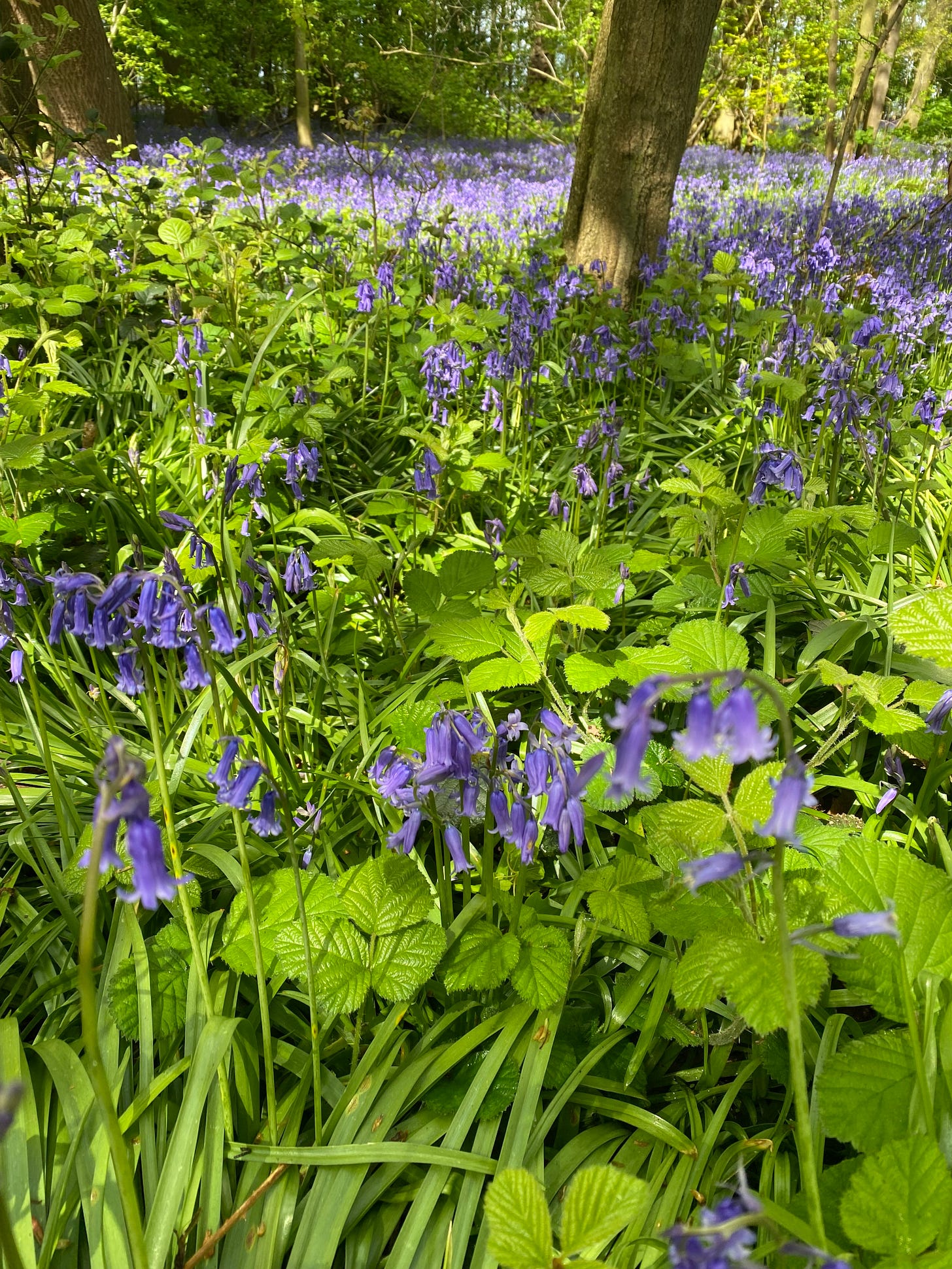

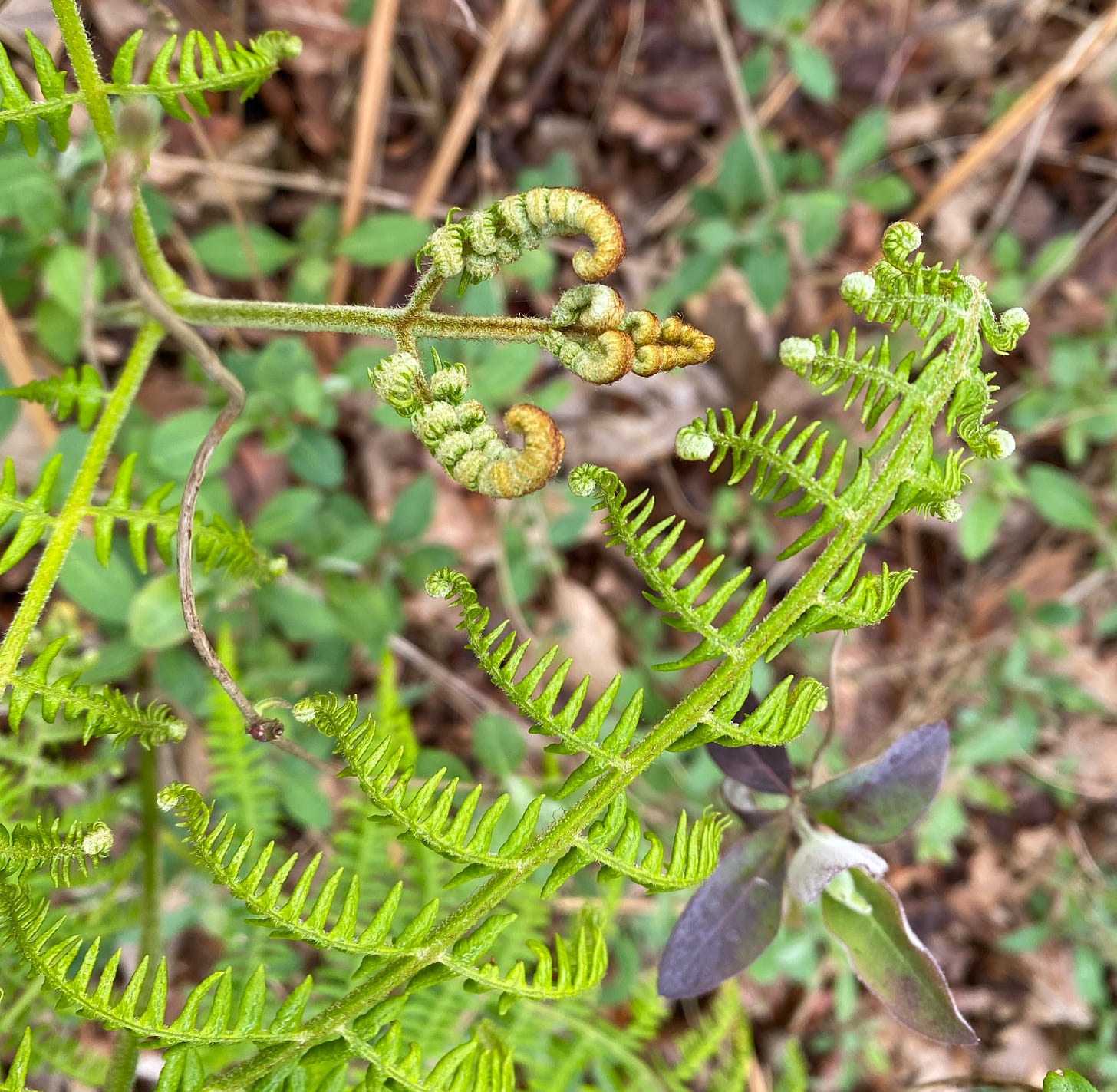
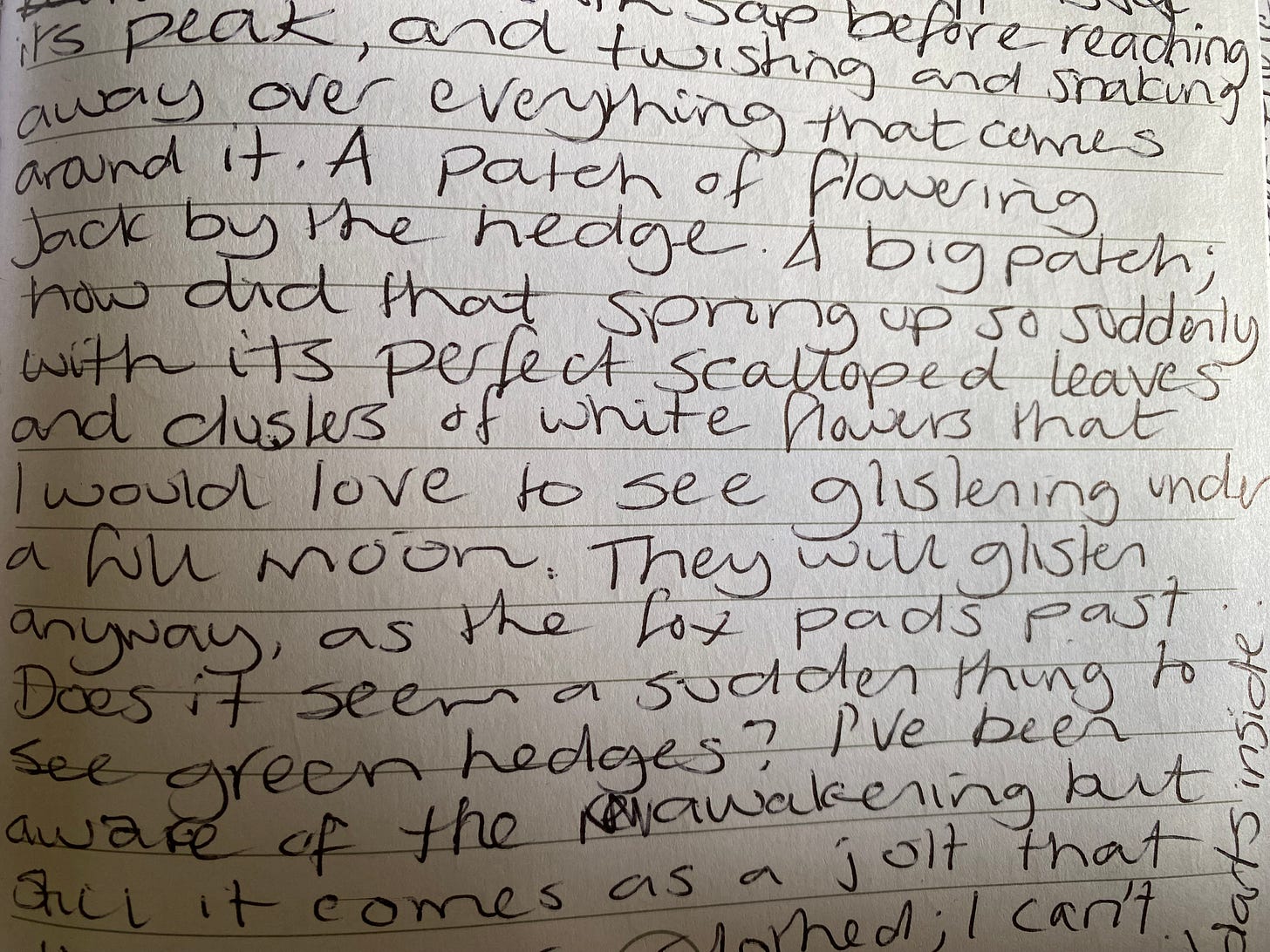
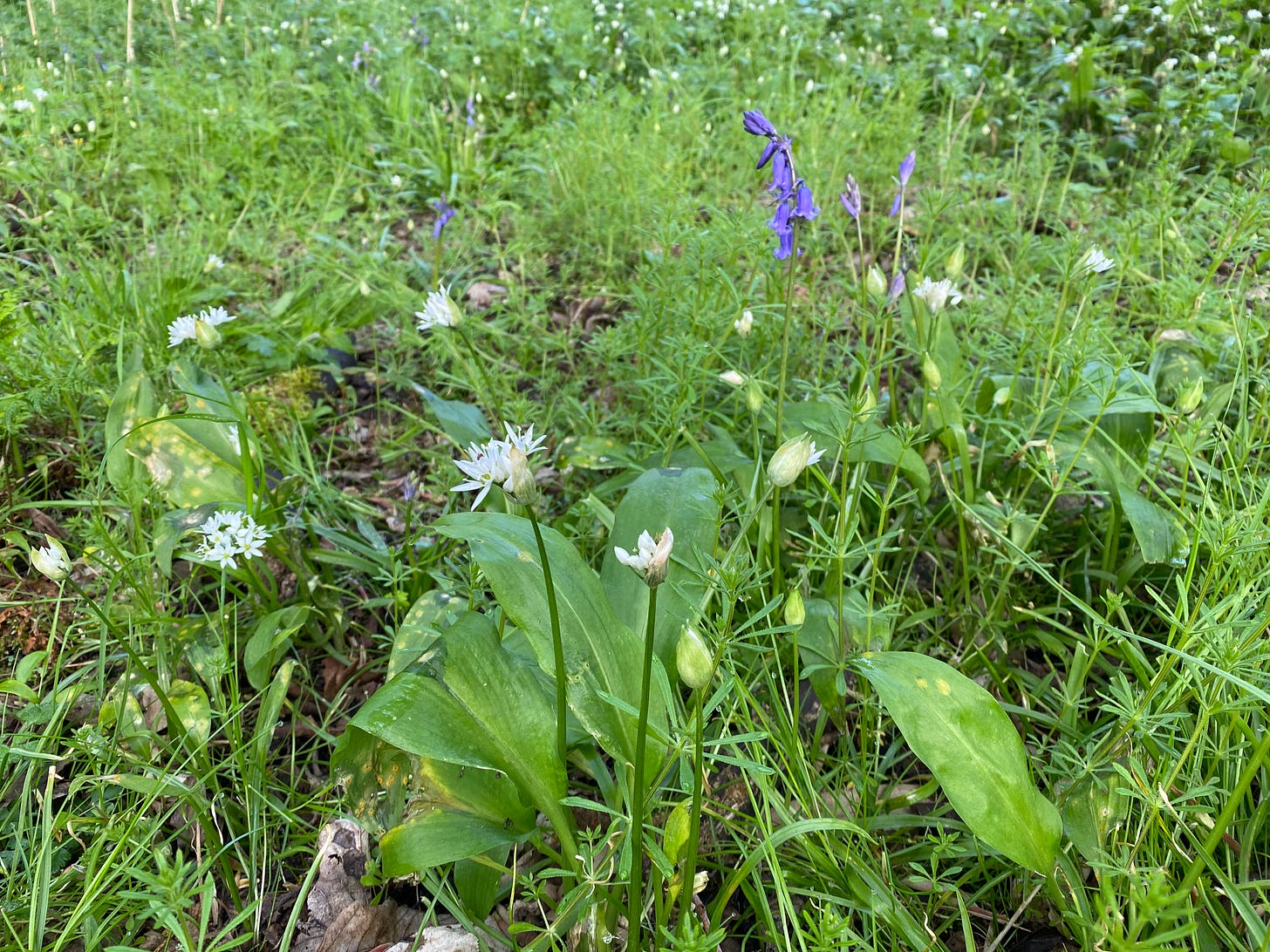





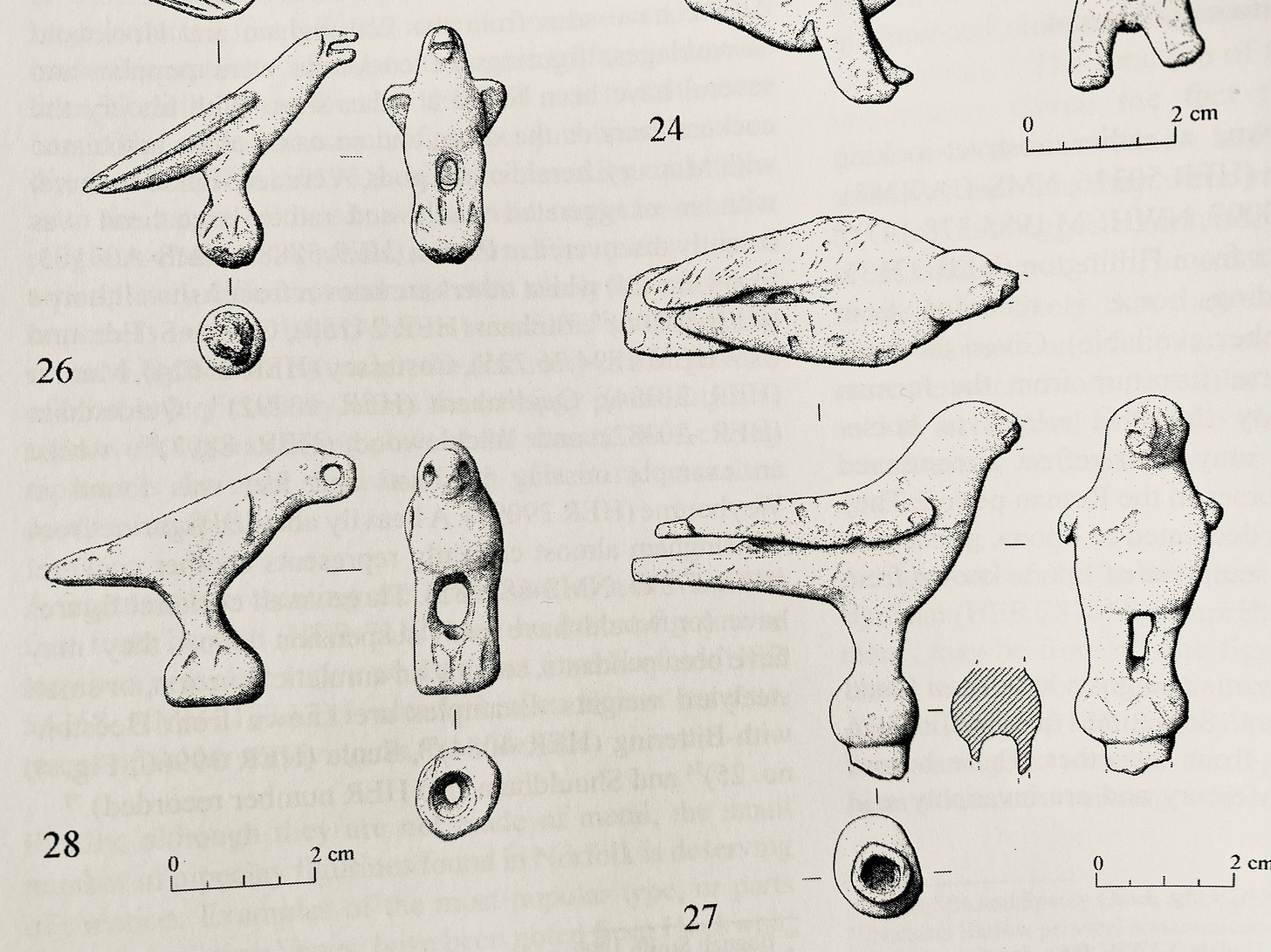
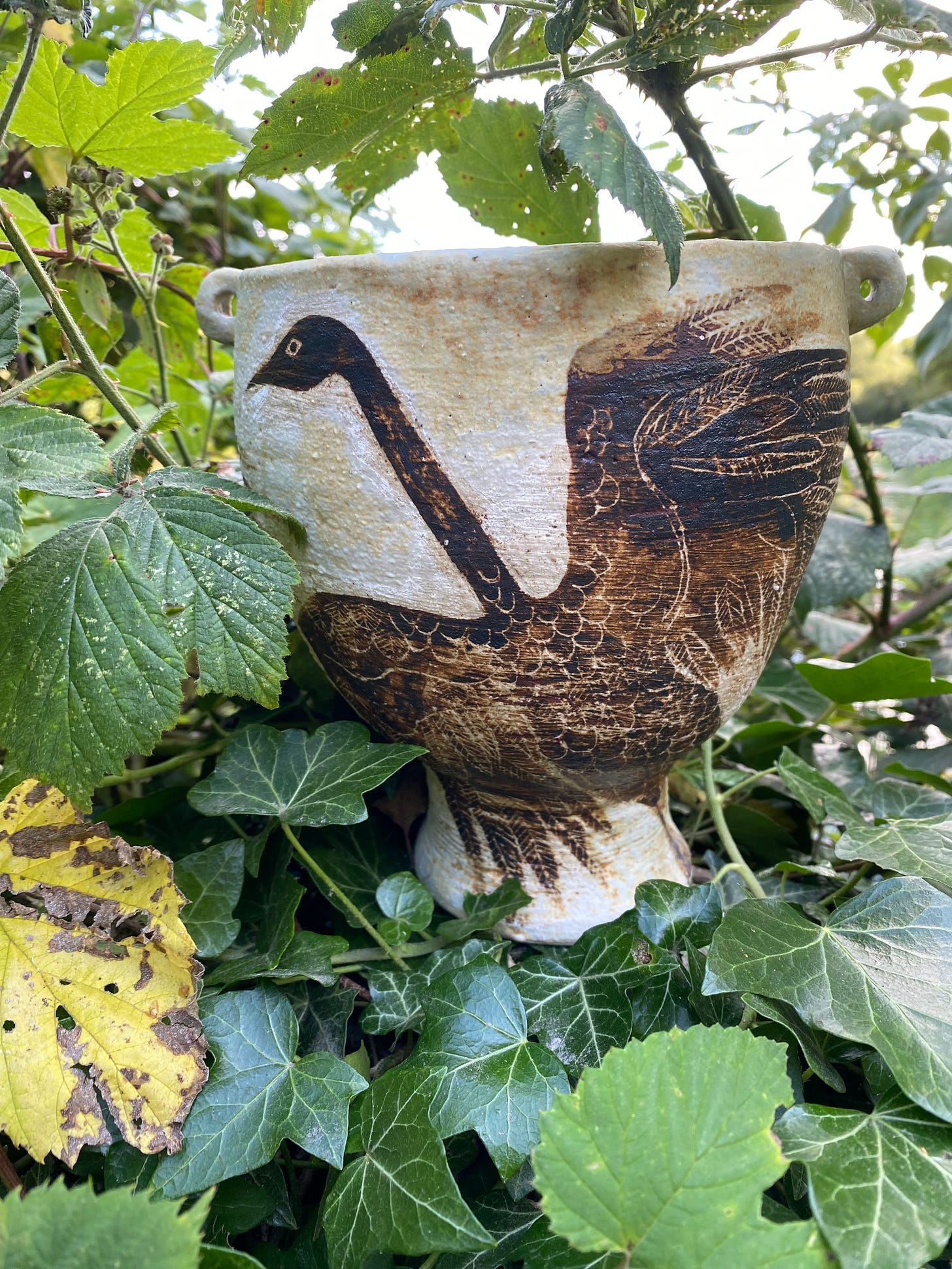
Imogen, thank you for sharing your mum’s and uncle’s childhood memories with us. It’s so lovely to see these old traditions up held in the 1930’s, I am guessing that ww2 saw many of these traditions fade away in the post war years. So sad. My Grandparents house was flattened during the war and all family photos were lost so seeing yours is a real treat. Beltane blessings will soon be upon us.
I love the stories and photos about your mum's childhood and I can see you in her photograph. You can't go wrong with a bit of crepe paper embellishment!! On a more serious note we've lost the magic .... and replaced with what?? As an aside - I'm currently reading Katherine May's 'Enchantment' Reawakening wonder in an exhausted age, as I search for ways to recapture - or more acurately reignite something in me that is currently absent .... best wishes Elaine